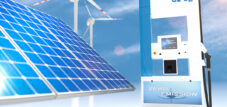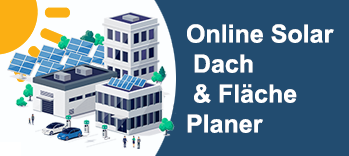Metallic fuels as the energy storage of the future? When aluminum and iron overtake hydrogen.
Xpert pre-release
Language selection 📢
Published on: November 8, 2025 / Updated on: November 8, 2025 – Author: Konrad Wolfenstein

Metallic fuels as the energy storage of the future? When aluminum and iron overtake hydrogen – Image: Xpert.Digital
Storing energy in metal: This simple idea has 23 times more power than hydrogen.
The solution to the winter electricity gap? Researchers are making the battery of the future from metal powder – one liter of iron for 8 hours of power: The overlooked revolution in energy storage.
The energy transition faces a paradoxical challenge: While solar power plants produce a surplus of clean electricity in the summer, some of which goes unused, a significant electricity shortfall threatens during the dark and cold winter months. This seasonal imbalance is one of the most persistent obstacles on the path to climate neutrality and continues to force Europe into a costly dependence on fossil fuel imports. While the public debate often focuses on hydrogen as a panacea, a potentially superior alternative is maturing in the shadows of research: the storage of energy in metallic fuels such as aluminum and iron.
This seemingly unusual idea, upon closer inspection, reveals itself to be an ingeniously simple and robust solution. The principle is based on a reversible chemical cycle: Excess summer electricity is used to reduce metal oxides into pure metals, which serve as extremely dense and safe energy carriers. When needed, these metals react in a controlled manner with water, simultaneously releasing usable heat and hydrogen, which is then converted back into electricity.
The physical advantages are astonishing: One liter of aluminum stores roughly 23 times more energy volumetrically than highly compressed hydrogen. The metal powder or granules can be safely stored and transported at room temperature and normal pressure – without expensive high-pressure tanks or cryogenic cooling. This means that metallic fuels could not only revolutionize seasonal energy storage for buildings and industry, but also reorganize global energy flows and pave the way for Europe to escape its geopolitical energy dependence. Pilot projects in Switzerland and Germany are already demonstrating that this technology is far more than just a laboratory idea – it could become the crucial, previously missing component for a secure and fully renewable energy supply.
Suitable for:
Swiss stroke of genius: How an inconspicuous metal granulate could end our energy dependence
The challenge of seasonal energy storage is one of the most persistent problems of the energy transition. While the summer surplus of photovoltaic electricity in Europe is steadily increasing, precisely this energy is lacking during the dark winter months. Metallic fuels such as aluminum and iron promise a solution that is superior to the more prominent hydrogen in crucial parameters and could fundamentally transform the energy sector.
Europe faces a fundamental energy challenge. Switzerland alone expects a winter electricity shortfall of around eight to ten terawatt-hours by 2050, despite massive expansion of photovoltaics. Germany and the entire European Union are grappling with a similar structural problem. While solar power generation creates overcapacities in the summer, some of which have to be curtailed, there is a glaring shortage in the winter. This seasonal discrepancy is exacerbated with every additional solar panel installed on European rooftops and open spaces. At the same time, the increasing electrification of heating and transportation is making electricity demand, particularly during the colder months, even more critical.
Europe's energy dependence on fossil fuel imports underscores the urgent need for sustainable storage solutions. Germany transfers between 80 and 130 billion euros annually for coal, oil, and gas abroad, while the European Union as a whole transfers more than 300 billion euros. These enormous sums are flowing out of the country instead of being invested in domestic infrastructure and future technologies. Furthermore, the geopolitical upheavals of recent years have painfully demonstrated the risks associated with this dependence.
Metallic fuels such as aluminum and iron require oxygen (O₂) to release energy. The reaction is similar to combustion, but it often takes the form of oxidation, e.g.:
Aluminum + Oxygen → Aluminum oxide (Al₂O₃)
Iron + Oxygen → Iron oxide (Fe₂O₃ / Fe₃O₄)
These reactions release a lot of heat – and it is precisely this energy that one wants to use as a form of storage.
Hydrogen (H₂) is a well-known energy carrier today, but it is difficult to store and transport.
Metallic fuels are considered an alternative because they:
◾️ are very energy-rich,
◾️ easily transportable (solid, not volatile),
◾️ are reusable – oxides can be recycled and reduced back to metal, often using renewable electricity.
Some concepts even use hydrogen to convert oxidized metal back into pure metal.
The physics of metallic energy storage
The basic principle of metallic fuels is based on an elegant chemical reversibility. Metals such as aluminum, iron, or silicon can be charged with electrical energy in a reduction process, during which oxygen is released from their oxide forms. The resulting pure metals act as highly compressed energy storage devices. When needed, this process is reversed. The metal reacts with water or steam, producing hydrogen and heat. The hydrogen can be used in fuel cells to generate electricity, while the heat can be fed directly into heating systems.
Energy density fundamentally distinguishes metallic fuels from gaseous alternatives. Aluminum achieves a theoretical energy density of over eight kilowatt-hours per kilogram and a volumetric density of more than twenty-three kilowatt-hours per liter. Even hydrogen compressed under high pressure at seven hundred bar achieves only about one kilowatt-hour per liter volumetrically. One liter of iron could supply an average German household with energy for more than eight hours, while one liter of highly compressed hydrogen would not even last for one hour.
These physical properties have far-reaching practical consequences. Metal powders or granules can be stored and transported at room temperature and normal pressure. Neither expensive high-pressure tanks nor complex cooling technology are required. The safety requirements are comparable to those of conventional bulk materials. Explosion hazards, such as those associated with fine metal dust, are avoided by using larger granules. The Swiss SPF Institute for Solar Technology at OST, for example, works with aluminum 6060 wire granules, which are commercially available and require no special safety precautions.
A comparison of the material candidates
Aluminum is considered the most promising candidate among metallic fuels. With its high energy density of theoretically over eight kilowatt-hours per kilogram, it significantly surpasses all other non-toxic metals. When it reacts with water, approximately fifty percent of the stored energy is released as heat and fifty percent as hydrogen. The latter can be converted into electricity in a fuel cell with fifty percent efficiency, resulting in an overall ratio of approximately seventy-five percent heat and twenty-five percent electricity. This combination is ideally suited for building energy systems, where heat demand typically predominates.
The challenge with aluminum lies in its energy-intensive production. Approximately thirteen to seventeen kilowatt-hours of electrical energy are required per kilogram of primary aluminum. Using coal-fired power in this process generates up to twenty kilograms of carbon dioxide per kilogram of aluminum. Even when renewable energy is used, the conventional Hall-Héroult process still releases about one and a half tons of carbon dioxide per ton of aluminum, as the carbon anodes are consumed and react to form carbon dioxide.
This is where the innovation comes in. In the European research project REVEAL, scientists led by OST are developing a completely carbon dioxide-free aluminum production process using so-called inert anodes. These anodes consist of metal alloys that are not consumed during the electrolysis process and release pure oxygen instead of carbon dioxide. The Icelandic partner IceTec is working in parallel on the industrial implementation of this technology, utilizing readily available geothermal and hydroelectric energy. German companies like Trimet are also driving the development forward and have already commissioned demonstrator plants.
Iron presents itself as a pragmatic alternative. With an energy density of approximately 0.2 to 0.3 kilowatt-hours per kilogram, it is significantly lower than aluminum, but still remains competitive with many other storage technologies. The decisive advantage of iron is its availability and low cost. As the fourth most abundant element in the Earth's crust, iron ore is available in virtually unlimited quantities without substantially affecting global market prices.
The reaction of iron with water produces very little heat. All the stored energy is transferred to the hydrogen produced, which can then be converted into electricity with an efficiency of around fifty percent. This ratio makes iron particularly attractive for applications where electricity demand is paramount. The research group led by Professor Wendelin Stark at ETH Zurich operates a pilot plant on the Hönggerberg campus that seasonally stores hydrogen using iron oxide. This technology is considered about ten times cheaper than conventional hydrogen storage.
Direct reduction with green hydrogen is already industrially established for iron production. Companies like ArcelorMittal and thyssenkrupp are working on the transition to hydrogen-based steel production. This technology can be used directly for energy storage. Its maturity level is between six and seven on a scale of nine, thus approaching market readiness. The plants can be operated at normal pressure and around 800 degrees Celsius, which limits the technical complexity.
Silicon represents a third option. It combines high energy density, similar to aluminum, with good availability. As the second most abundant element in the Earth's crust after oxygen, there are practically no resource constraints. Production technology is well established thanks to the solar industry. However, research on silicon as an energy storage medium is less advanced than for aluminum and iron. TU Darmstadt is investigating silicon within the framework of the A-STEAM project, but it will likely be several years before it is used in industrial applications.
The Economics of Transformation
The economic viability of metallic fuels depends crucially on the production costs of carbon-free metal extraction. At the conventional aluminum price of approximately $2,650 per ton, additional costs of around $400 would arise in 2035 if inert anode technology is implemented industrially. In the long term, costs are expected to stabilize at the 2020 level, albeit with a premium of approximately $300 compared to a hypothetical continuation of conventional production.
These additional costs, however, are put into perspective within the overall context. Investments in decarbonizing the aluminum industry are estimated at around one trillion dollars, of which roughly half is earmarked for providing low-emission energy. Two hundred billion dollars are budgeted for low-carbon anodes. But these investments simultaneously lay the foundation for an entirely new energy storage market that extends far beyond the traditional use of aluminum.
The overall efficiency of converting renewable electricity back into electricity and heat via metallic storage ranges from fifty to sixty percent for all three metals. This value initially appears low compared to lithium-ion batteries with efficiencies of eighty-five to ninety-five percent. However, several factors must be considered in the evaluation. First, the comparison is only relevant for applications with comparable storage durations. Batteries are suitable for hours to a few days, while metallic fuels are suitable for months to years. The cost per kilowatt-hour stored increases dramatically for batteries with increasing storage duration, as the investment costs are spread over fewer cycles.
Secondly, heat must be factored in as a fully usable energy source. In buildings with heating requirements, a system with 75 percent heat and 25 percent electricity is potentially more ideal than pure electricity, which first needs to be transformed via a heat pump. The Swiss researchers anticipate electricity and heating costs of around 20 centimes per kilowatt-hour in winter from aluminum storage systems. This would be competitive with many alternative energy supply options.
Power-to-gas with hydrogen achieves an efficiency of only 30 to 40 percent when simply reconverting to electricity without heat utilization. With methanization, this drops to around 33 percent. Only with optimized combined heat and power (CHP) and consistent waste heat utilization can efficiencies of over 80 percent, based on the higher heating value, be achieved. In practice, however, these values are rarely reached. Furthermore, hydrogen storage and transport incur considerable costs. Underground salt caverns are only feasible in geologically suitable locations. For countries like Switzerland without such formations, only expensive above-ground tanks or imports remain as options.
The storage costs of different technologies vary significantly. Seasonal thermal energy storage systems cost between 25 and 400 Swiss francs per megawatt-hour of stored energy. For electrical energy, the costs for pumped-storage power plants are around 100 francs per megawatt-hour, but increase by more than tenfold for other seasonal energy storage systems. Lithium-ion batteries currently cost between 400 and 1,000 euros per kilowatt-hour of storage capacity. While these prices have fallen drastically, they remain prohibitively expensive for seasonal storage.
Pumped storage power plants function exceptionally well for daily and weekly cycles, achieving efficiencies of 70 to 85 percent. However, for seasonal storage with only one cycle per year, costs rise to more than two euros per kilowatt-hour of additional electricity. The geographical limitations of suitable locations further restrict expansion potential. In an economy fully transitioned to renewable energies, existing pumped storage capacities would be far from sufficient.
System integration and sector coupling
The strength of metallic fuels lies in their seamless integration into the concept of sector coupling. This term describes the linking of the traditionally separate sectors of electricity, heat, and mobility. While the transition to renewable energy in the electricity sector is already well advanced, heat supply and transportation remain heavily dependent on fossil fuels. Europe spends over three hundred billion euros annually on imports of coal, oil, and gas—money that is lost to its own economy.
Metallic fuels enable flexible sector coupling. In summer, surplus photovoltaic electricity is used to reduce metal oxides. The resulting metal is stored. In winter, oxidation takes place, producing heat and hydrogen. The heat flows directly into the heating system, ideally coupled with a heat pump, which increases efficiency at milder temperatures. The hydrogen is converted into electricity in a fuel cell, and the waste heat from this process is then fed back into the heating system.
This combination precisely addresses the central problem of European energy systems. In Germany, heating demand accounts for roughly half of total final energy consumption. A significant portion of this is concentrated in the winter months. A storage system that primarily supplies heat while also generating substantial amounts of electricity perfectly meets this demand profile. The Lucerne University of Applied Sciences and Arts has calculated that consistent insulation of residential buildings, combined with heat pumps, could virtually eliminate Switzerland's winter electricity shortfall. In conjunction with metallic storage systems, such a system would optimally utilize surplus summer electricity and ensure a reliable winter supply.
According to the Swiss researchers' model, equipping all multi-family buildings with metal storage systems could significantly reduce the expected winter electricity shortfall of eight terawatt-hours by 2050. Equipping just half of all multi-family buildings would contribute several terawatt-hours. The decentralized structure of this solution avoids costly grid expansion measures and increases security of supply through redundancy.
Further perspectives are emerging for industrial applications. Process heat accounts for a significant portion of industrial energy demand. Direct electrification using heat pumps, electrode boilers, or resistance heating is technically feasible and already available for many temperature ranges. However, metallic fuels can offer a solution, particularly for high-temperature processes and baseload stability. The combustion of iron powder can reach temperatures exceeding 1,800 degrees Celsius, sufficient for many industrial processes.
Converted coal-fired power plants could be operated with metal powders. The existing infrastructure for combustion, steam circulation, and power generation could be largely utilized. The resulting metal oxide would be collected and transported to facilities with ample renewable energy for reduction. This approach would utilize existing facilities, preserve jobs, and simultaneously contribute to decarbonization. TU Darmstadt is investigating this concept as part of its Clean Circles Initiative.
Our EU and Germany expertise in business development, sales and marketing
Industry focus: B2B, digitalization (from AI to XR), mechanical engineering, logistics, renewable energies and industry
More about it here:
A topic hub with insights and expertise:
- Knowledge platform on the global and regional economy, innovation and industry-specific trends
- Collection of analyses, impulses and background information from our focus areas
- A place for expertise and information on current developments in business and technology
- Topic hub for companies that want to learn about markets, digitalization and industry innovations
Seasonal energy storage 2.0 with metal energy: Can aluminum and iron bridge the winter energy gap?
Technological maturity and development prospects
The technological maturity of the various components differs considerably. The oxidation of metals for energy release has been known for a long time and is already used in specialized applications. Aluminum and iron particles are used in Ariane booster rockets, fireworks, and other pyrotechnic applications. The fundamental chemical processes are therefore mastered and understood.
The controlled reaction with water or steam at moderate temperatures for heat and hydrogen production is currently in the pilot phase. The SPF Institute for Solar Technology in Rapperswil has commissioned a prototype developed as part of the REVEAL project. Once operational, this prototype will demonstrate how heat and electricity for buildings can be produced from aluminum through chemical processes. The energy produced can be used to power buildings and industrial plants or fed into district heating networks.
ETH Zurich operates a pilot plant for iron-based hydrogen storage on its Hönggerberg campus. Three stainless steel tanks, each containing 600 kilograms of iron oxide, can store approximately ten megawatt-hours of hydrogen in the long term. This generates four to six megawatt-hours of electricity, depending on the conversion technology. The plant has been operating since 2024 and is scheduled for expansion by 2026 to cover one-fifth of the campus's winter electricity needs with seasonally stored solar power. Scaling up to one thousand tons of iron oxide could deliver two gigawatt-hours of electricity, comparable to one-tenth of the capacity of the Nant de Drance pumped-storage power plant.
The greatest technological challenge lies in carbon-free metal production. For iron, direct reduction using green hydrogen has already been industrially proven. Several steel companies are currently building demonstration plants and planning a gradual transition by 2030 to 2040. The technology has a maturity level of approximately seven to eight on a scale of nine and is thus approaching commercial availability.
Inert anode technology is on the verge of a breakthrough in the aluminum industry. Trimet in Essen has been operating a demonstrator plant under production conditions since 2024. The company anticipates industrial implementation by 2040 and climate neutrality by 2045. International corporations such as Norsk Hydro and Rio Tinto are also investing heavily in this technology. Apple has already purchased the first shipment of aluminum from a pilot plant with inert anodes for use in smartphones. This demonstrates the commercial interest and credibility of the technology.
Scaling remains a critical factor. Global annual production of aluminum is around seventy million tons, while steel production is nearly two billion tons. Additional production capacity would be required to make a significant contribution to seasonal energy storage. However, this would not necessarily destabilize commodity markets. Aluminum and iron are among the most abundant elements in the Earth's crust. Their resources are practically unlimited. Production would be limited primarily by the availability of affordable renewable energy.
This is precisely where a crucial opportunity lies. Regions with excellent conditions for renewable energy but low local demand could become metal producers. Iceland, with its geothermal and hydroelectric power, North Africa, with its intense sunshine, or Patagonia, with its wind resources, could produce metals for export on a large scale. Transportation is simple and safe. Container ships can transport metal granules under normal conditions, without the risks and costs associated with liquid hydrogen or liquefied natural gas.
Rethinking global energy flows
The internationalization of energy supply via metallic energy carriers would fundamentally alter global trade flows. Europe spends over three hundred billion euros annually on fossil fuel imports. Germany alone spends between eighty and one hundred and thirty billion euros. These enormous sums flow largely to countries with authoritarian regimes whose policies often contradict European values. Financing these imports contributes to geopolitical instability and makes Europe vulnerable to blackmail, as the recent energy crises have painfully demonstrated.
A transition to metallic energy carriers could resolve these dependencies while simultaneously enabling new partnerships. Countries with abundant renewable resources but limited domestic industrialization would gain a valuable export perspective. Morocco, with its solar potential; Chile, with its wind and geothermal capacity; or Australia, with its vast land area suitable for renewable energy, could become metal producers. These countries are predominantly democracies and share fundamental values with Europe. Energy imports would thus contribute to development financing rather than supporting autocracies.
The circular economy of metallic fuels differs fundamentally from that of fossil fuels. Coal, oil, and gas are irreversibly burned and converted into greenhouse gases. Metals, on the other hand, circulate in a closed loop. The oxidized metal is transported back to the reduction plant and reloaded. This cycle can theoretically be repeated an unlimited number of times without any material loss or degradation. Researchers at ETH Zurich have even observed that the storage capacity of their iron reactors increases slightly with each cycle.
This circular approach has far-reaching economic implications. The investment in metal production pays for itself over numerous cycles. Unlike batteries, whose capacity decreases with each cycle, metallic storage systems remain usable indefinitely. While the initial investments in reduction and oxidation plants, as well as in the metal itself, may be substantial, over decades the costs per kilowatt-hour stored become competitive.
The Swiss researchers' model calculations assume costs of around twenty centimes per kilowatt-hour for electricity and heat from an aluminum storage system. This is in line with the production costs of renewable energies and significantly below the costs for peak load electricity in winter months. With increasing technological maturity and scaling, costs are expected to fall further. The history of photovoltaics and wind energy demonstrates how dramatic cost reductions can be due to learning curve effects.
Risks and challenges
Despite its promising potential, significant challenges and risks remain. Technological development is not yet complete. In particular, carbon dioxide-free aluminum production using inert anodes is only just beginning to transition to industrial implementation. Numerous previous attempts to establish this technology have failed. The inert anode has a reputation for always being on the verge of completion, without ever achieving a breakthrough.
The increased electricity costs pose a problem. Inert anodes not only do not release carbon dioxide, but they also do not provide process energy like carbon anodes. The electricity demand per ton of aluminum therefore increases. With already high energy costs in Europe, this could impair competitiveness. Aluminum production could shift further to regions with particularly cheap energy, while Europe would become a mere importer.
Competition for renewable energy is intensifying. Numerous sectors are striving for electrification. Industry needs green hydrogen for chemical processes and steel production. Transportation is becoming electrified with millions of electric vehicles. Digital infrastructures with their data centers consume increasing amounts of electricity. In this competitive environment, metallic storage solutions still need to prove their economic superiority.
The infrastructure requirements are considerable. Millions of decentralized storage systems or large centralized facilities would be needed to make a significant contribution to winter energy supply. Building this infrastructure requires time, capital, and political will. The payback periods for such systems could stretch to decades, which might deter private investors. Government subsidies and regulatory incentives would likely be necessary.
The environmental impact of the massively expanded metal production must be critically examined. Even if the production process is carbon-neutral, it consumes enormous amounts of electricity. This electricity, in addition to all other energy needs, must come from renewable sources. The land required for the necessary wind and solar power plants is considerable. Furthermore, bauxite extraction for aluminum requires large-scale mining with its associated ecological and social consequences.
Public acceptance of new energy technologies is fragile. Every large-scale industrial plant encounters local resistance. The construction of wind turbines, solar parks, and power lines is regularly delayed or prevented by citizen initiatives. Metal reduction plants, which operate at high temperatures and consume significant amounts of electricity, could face similar resistance. Transparent communication about benefits, risks, and environmental impacts is essential.
Strategic Perspectives for Europe
For Europe, the development of metallic fuels offers a strategic opportunity to establish technological leadership in a future market. Swiss and German research institutions are among the world's leading institutions in this field. The REVEAL project brings together leading European partners. Industrial expertise in metallurgy, chemical process engineering, and energy system integration is readily available in Europe.
A coordinated European strategy could include several elements. First, continuing and intensifying research funding. Previous investments have enabled considerable progress. Scaling up funding would extend the technological lead. Second, creating regulatory incentives for market entry. Feed-in tariffs or investment grants could motivate early adopters.
Thirdly, integration into the European energy infrastructure strategy. The planned hydrogen networks could be expanded to also accommodate metallic energy carriers. Existing gas infrastructure could be partially repurposed. Fourthly, international cooperation with countries that offer ideal conditions for metal production. Development partnerships with North African countries, investments in South American production capacities, or technology transfer to Asia could create win-win situations.
The geopolitical dimension should not be underestimated. Reduced dependence on fossil fuel imports significantly increases Europe's political freedom of action. The ability to ensure energy supply in winter from domestic or reliable international sources strengthens resilience against external shocks. Diversifying energy sources and supply chains reduces the potential for blackmail by authoritarian regimes.
At the same time, new dependencies arise. Europe could potentially become dependent on metal imports, similar to its current reliance on fossil fuels. The difference lies in the reversibility and circularity of metals. They can be recycled and reused. This avoids the existential scarcity seen with finite fossil resources. Furthermore, production could, in principle, be located within Europe, provided sufficient and affordable renewable energy is available.
The future of energy storage
Metallic fuels will not be the sole solution to the challenges of the energy transition. Rather, they will be part of a diversified portfolio of storage technologies. Lithium-ion batteries will retain their strength in the short-term range of hours to days. Pumped-storage hydroelectric plants will remain indispensable for grid stabilization and balancing daily and weekly fluctuations. Hydrogen will be needed in industry as a process gas and reducing agent.
Metallic fuels have a specific niche in seasonal long-term storage, primarily for heat supply. Here, they combine the advantages of high energy density, ease of handling, inexpensive raw materials, and good sector coupling. This combination makes them superior to other technologies. Further development will show whether and how quickly these theoretical advantages can be realized in practice.
The coming years will be crucial. Several pilot plants are currently operational or under construction. The experience gained from these projects will reveal whether the technical and economic expectations are met. The development of inert anode technology will determine whether carbon dioxide-free aluminum production will actually become possible on a large scale. The willingness of industry and policymakers to invest in this technology will define the timeframe.
Integrating metallic storage systems into existing energy systems requires not only technological innovation, but also regulatory and market-related innovation. New business models must be developed that take into account the specific characteristics of metallic storage. Long-term contracts between producers, storage operators, and energy suppliers are necessary to ensure investment security. The assessment of the climate and energy-related benefits must be reflected in appropriate market prices or support mechanisms.
The public debate on energy storage needs to broaden. For too long, the discussion has focused one-sidedly on hydrogen as a supposed universal solution. The reality is more complex. Different applications require different solutions. Metallic fuels deserve a prominent place in this landscape. Their advantages are too significant to be ignored. Their potential is too great to remain untapped.
The transformation of the energy system is one of the greatest technological and economic challenges of this century. It requires the courage to innovate, a willingness to invest, and openness to new solutions. Metallic fuels offer one such solution. They are more than just an interesting laboratory curiosity. They could become a game-changer for seasonal energy storage, a building block for solving the winter electricity gap, and a path to energy independence. They are an alternative that doesn't replace hydrogen, but complements it effectively and surpasses it in some applications. Further development deserves attention, support, and critical scrutiny. The coming years will show whether metallic fuels can deliver on their promise.
🎯🎯🎯 Benefit from Xpert.Digital's extensive, five-fold expertise in a comprehensive service package | BD, R&D, XR, PR & Digital Visibility Optimization

Benefit from Xpert.Digital's extensive, fivefold expertise in a comprehensive service package | R&D, XR, PR & Digital Visibility Optimization - Image: Xpert.Digital
Xpert.Digital has in-depth knowledge of various industries. This allows us to develop tailor-made strategies that are tailored precisely to the requirements and challenges of your specific market segment. By continually analyzing market trends and following industry developments, we can act with foresight and offer innovative solutions. Through the combination of experience and knowledge, we generate added value and give our customers a decisive competitive advantage.
More about it here:
Your global marketing and business development partner
☑️ Our business language is English or German
☑️ NEW: Correspondence in your national language!
I would be happy to serve you and my team as a personal advisor.
You can contact me by filling out the contact form or simply call me on +49 89 89 674 804 (Munich) . My email address is: wolfenstein ∂ xpert.digital
I'm looking forward to our joint project.























